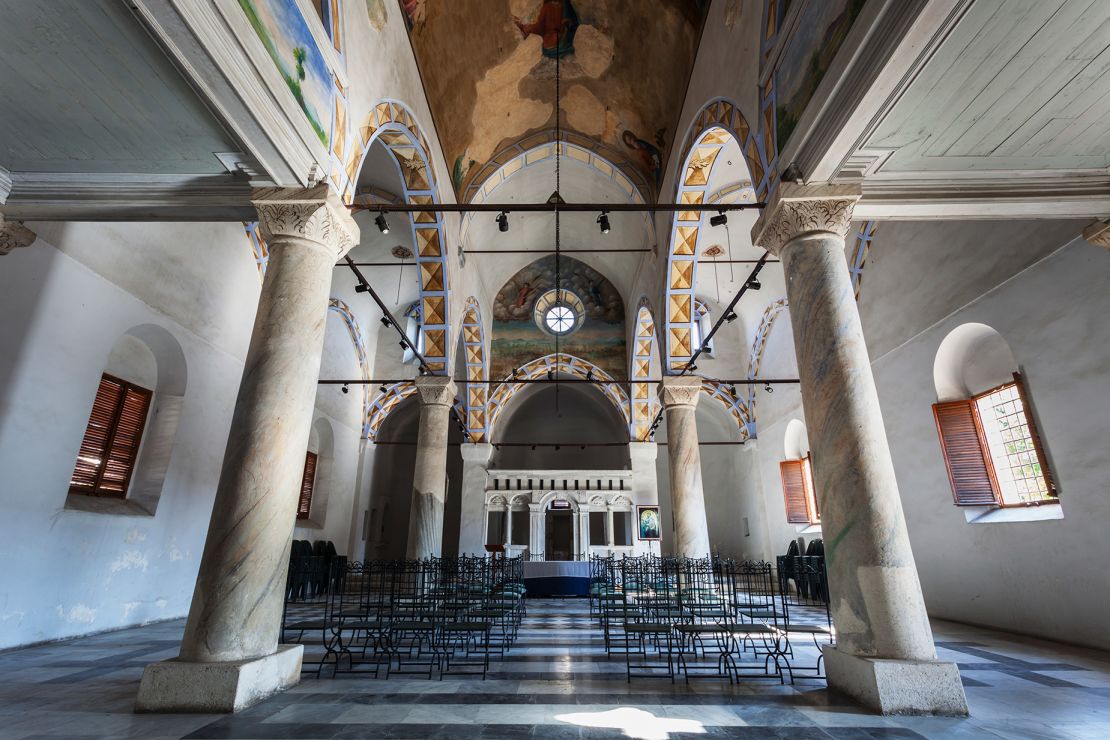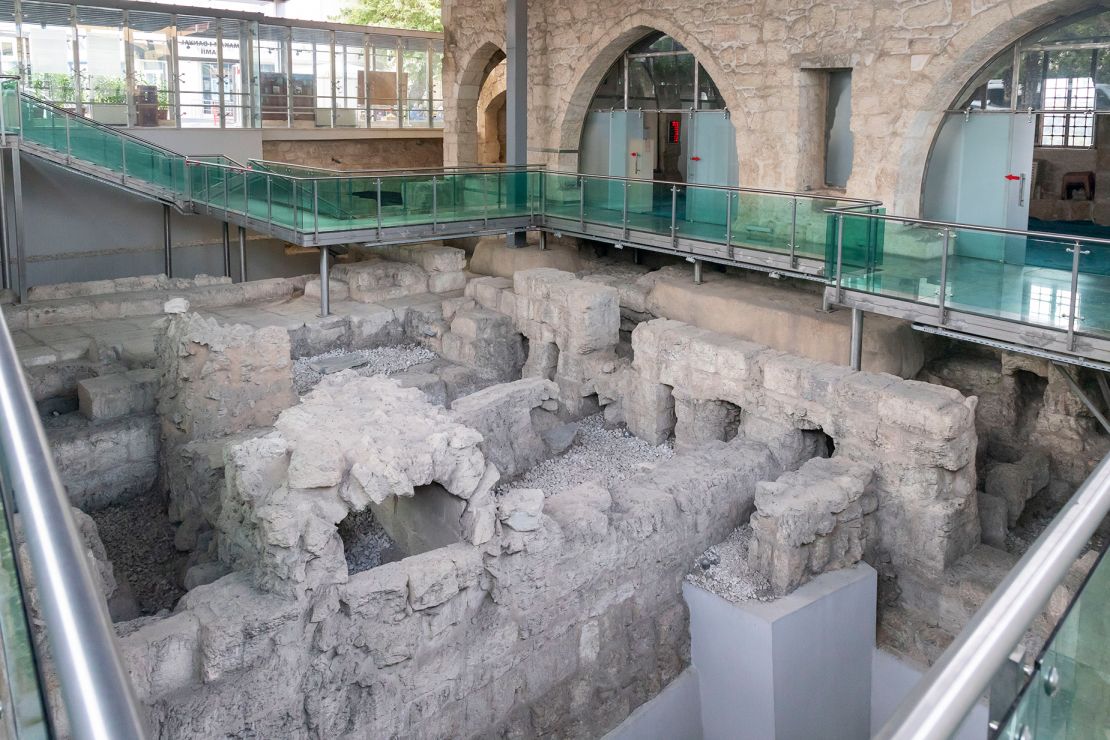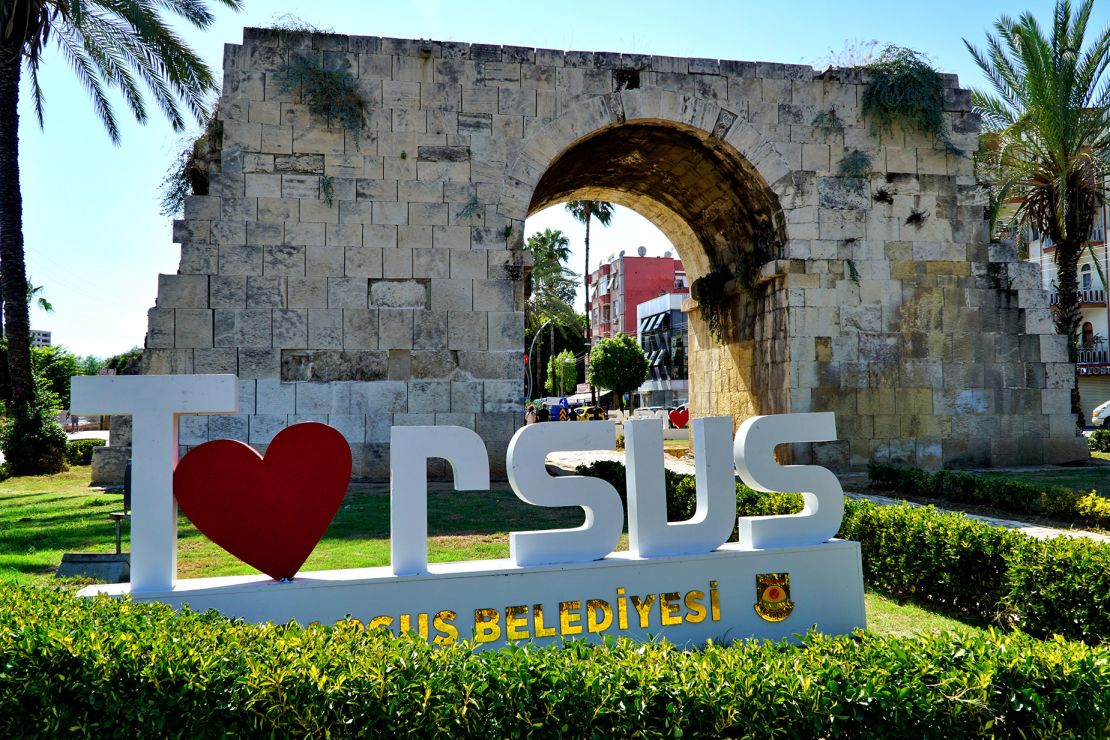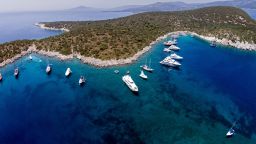Editor’s Note: This CNN Travel series is, or was, sponsored by the country it highlights. CNN retains full editorial control over subject matter, reporting and frequency of the articles and videos within the sponsorship, in compliance with our?policy.
It has a 7,000-year-old history, was home to two of Christianity and Islam’s most important figures … and has some of the best hummus you’re likely to eat. Tarsus – in eastern Turkey, around 180 miles from the Syrian border – is a gumbo of history, religion and food.
Twelve miles inland from the Mediterranean and around 560 miles southeast of Istanbul, Tarsus was originally built close to the Cydnus River. As the main point of access from the Taurus Mountains to the sea, the city was a major player in trade as early as 1600-1180 BCE, when it was ruled by the Hittites, an ancient civilization. In 67 BCE, underthe Romans, it became the capital of Cilicia Pedias – the Cilician Plain, a vast, fertile area in modern southeast Turkey – and prospered.
In ancient times Tarsus was renowned as “a center for education, philosophy and important universities,” says Atalay Dik, a mariner and lover of his hometown, who can often be found sharing his knowledge with tourists at Saint Paul Café and Restaurant, owned by his family. “Even now, students come from universities in Alexandria and Athens to do their Masters degrees (here).”
In the footsteps of St. Paul

Part of the appeal of Tarsus is that here, the past is often present. “Tarsus is a place where you can explore centuries-old mosques and churches, and see firsthand how Christianity and Islam have coexisted and shaped the city’s rich cultural tapestry,” says Jane Gundo?an, author of “Mersin All Over,” the only English-language guidebook dedicated to the area.
You don’t need to imagine walking in St. Paul’s footsteps – you can actually do it. He was born here as Saul, a Jew, around 4 BCE. He went on to become one of the leaders of the nascent Christian religion, converting thousands to the faith.
Pilgrims can visit “St. Paul’s church,” also known as the St. Paul Memorial Museum. Commissioned by the Orthodox community in 1850, it was built on the site of a much earlier place of worship dating to the 11th or 12th century. There has been no official Christian community in Tarsus since 1923, the year of the Greece-Turkey population exchange, but restoration works in 2001 returned the frescoes to their full glory. Jesus takes center stage, flanked by the four evangelists – Matthew, Mark, Luke and John – in the naves on either side. Angels levitating above the apses complete the adornment. Outside is an Escher-like arrangement of staircase, repeated arches and metal railings on the building’s exterior.
From the lions’ den to Tarsus

You’ll likely know the Bible story of Daniel, who was thrown into a den of lions for praying to his God. The story goes that the lions left Daniel untouched, causing Darius – the king of Babylon, who had reluctantly sent him there – to recognize the Jewish God. In the Turkish version of the story, Daniel died in Tarsus, having traveled there in his old age to pray for rain during a crippling drought.
According to historical records, after Tarsus was conquered by the forces of ?mer, an 11th-century caliph, a body was discovered shrouded in cloth embellished with gold thread. There was a ring on one of the fingers, etched with the image of a child standing between two lions. ?mer took this to mean that the body was Daniel’s, and ordered the grave be buried even deeper so as not to be discovered. The tomb remained undisturbed until renovations in 2006.
Although several other countries lay claim to being the site of Daniel’s grave, this – known as Danyal Peygamber Kabri – is the only one where you reach it by walking through a 19th-century mosque, among the remains of a 16th-century Ottoman bath and over the arches of a bridge that once spanned a river.
The mosque is still in use, so visitors must meet Islamic standards of modesty by covering their arms and legs,?and women also need a headscarf (you can borrow clothes if need be). Once down in the rather sparse room said to have been Daniel’s last resting place it’s common to see Muslim women kneeling in prayer next to a metal grille.
Mosques and markets

Not far from the tomb is the austere 16th century Ulu Camii, Tarsus’ Grand Mosque, whose 33-foot minaret doubles as a clock tower. The clock was added in the 19th century and was brought over from Europe especially.
Next to it is K?rkka??k Bedesten or “40 Spoons Bazaar” – a covered market originally built as an imaret, or soup kitchen, in 1579. Topped by seven domes, the 21 rooms are a hive of activity with stores selling blue Turkish “evil eyes,” ceramics, shawls and other souvenirs.
The most popular souvenir is inspired by an epic love story. Kleopatra Iksiri, or “Cleopatra’s Potion,” is named for the Egyptian beauty who came to Tarsus to meet Roman commander Mark Antony in 41 BCE. “Legend has it that Cleopatra possessed a mystical elixir rumoured to have kept her eternally youthful,” says Gundo?an. “Some say it was a brew concocted from rare herbs found only in the hidden corners of Tarsus while others speculate that it was infused with the magic of the gods themselves.” It’s much sought after by domestic tourists of a certain age who believe that this so-called Elixir of Youth can work wonders.
Just around the corner, in the Bilal Habe?i Mescidi, a different kind of miracle took place. Bilal ibn Rabah?was born into slavery in Mecca and became one of the most trusted companions of the Prophet Mohammed.
Persecuted for converting to Islam in 615 CE and later emancipated, Rabah was Islam’s first ever muezzin – the official who calls the faithful to prayer. This small mosque built in his honor in the seventh century was, Dik believes, the site of the first Islamic call to prayer in Tarsus. It’s widely accepted that Bilal ibn Rabah came to Tarsus and recited the call to prayer – though whether it was for the first time is disputed. Either way, despite the structure’s nondescript appearance, it’s thrilling to know this is where history was made.
Hummus and history

The hummus in Tarsus is as sensational as its history – Gundo?an, for example, calls it “life-changing.” Hummus is served in dozens of Tarsus restaurants but those in the know head for local institution Kervan Humus, where the basic offering is anything but. A plate of slightly warm, smooth, creamy hummus comes drizzled with sizzling oil, a sprinkle of parsley, a handful of whole chickpeas and a scattering of red pepper flakes. Feeling really hungry? Try the hummus with sucuk (spicy sausage), past?rma (cured meat) or even thin slices of steak.
After a hummus overload, many visitors walk off the calories in the K?z?lmurat neighborhood. Past a stretch of Roman road discovered by accident in 1993, the streets are lined with old Ottoman houses, many adorned with wooden beams, white plaster walls and cumba, traditional windows jutting out overhead. “It’s a unique part of Tarsus because the local government officials encourage the rebuilding of Ottoman houses to their former glory,” says Gundo?an.
She suggests starting at the House of St. Paul, where the apostle is said to have been born.
It’s not a whole house – the structure is said to have been dismantled by German soldiers in World War I and only the foundations remain, fenced off and on display under glass in the courtyard. Nonetheless, she says, “It’s a pilgrimage site that resonates with centuries of religious significance and offers a window into the life and teachings of one of Christianity’s most influential figures.”
Gundo?an suggests drinking from St. Paul’s well, also located in the grounds. At first glance the well appears to be like any other, but scientific evidence dates it to the Roman period, when Paul was alive. Believers attribute healing powers to the water.
A glass of homemade lemonade at Saint Paul Café and Restaurant in the center of the old town might not be curative, but it’s certainly refreshing. Housed in a 180-year-old building, the cafe is owned by Hikmet and Hasan O?uzcan, cousins of Atalay Dik. Many of the possessions of the former owners have been retained, from embroidered cushions to Turkish coffee cups. The quirky sitting room even has a shower in one corner.
Tarsus offers a wonderful mix: Christianity and Islam, hummus and Ottoman architecture. There’s even a local museum too, and it’s far from dusty, containing interesting archaeological finds and fun ethnographic tableaux showing traditional local scenes.
Dik recommends visitors allow at least three days to really appreciate his city. He should know.
“I’ve travelled to almost all parts of the New World but I’m very proud of my city,” he says.
“I always feel calmer when I return to Tarsus. I can breathe in culture and tolerance towards human beings more deeply, living here amongst all the ancient culture and civilizations with antique ruins all around the city.”










